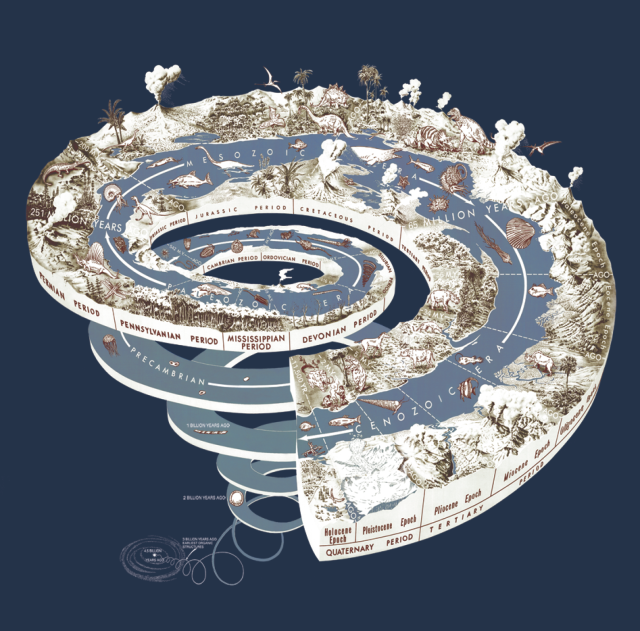A dozen or so soldiers, their limbs swollen in death, lie on the Gettysburg battlefield. Timothy O’Sullivan’s photograph cemented the grisly scene in America’s national consciousness. A Harvest of Death, he called it. A grim reaper had mowed down the flower of American manhood. At Gettysburg. Shiloh. Antietam. Vicksburg. The Civil War claimed over 750,000 soldiers. It remains by far the deadliest war in American history.
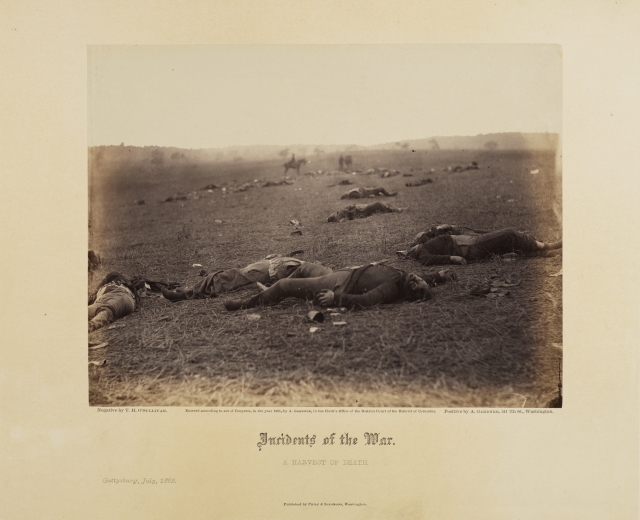
As stupefying as these numbers were, they were dwarfed by the far larger necropolis lying beneath America’s Civil War battlefields. In rocky tombs, formed millions of years before Gettysburg, rested the fossilized remains of a riotous wonder of life that had cavorted and gnashed its way through the continent’s primordial seas and landscapes. Brontosaurus and saber-toothed cats. Pterodactyls and the fearsome sea-serpent-like Elasmosaurus. Tiny belemnites, basically ice cream cones with tentacles, squirting their way through the shallows.
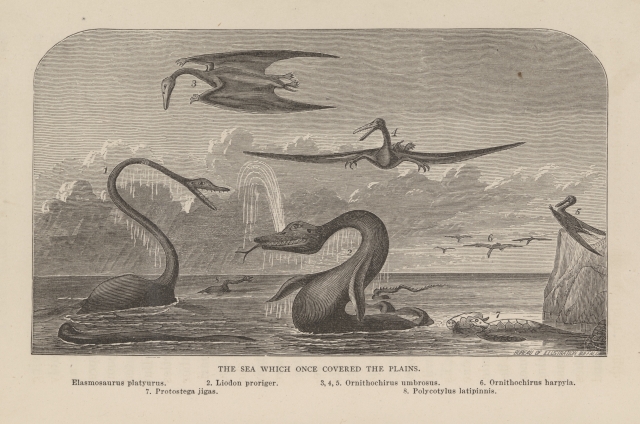
This lost world had been unearthed piecemeal in the decades between the Revolution and the Civil War. From New Jersey farms, Alabama cotton plantations, the Erie Canal, and the gullies of the Badlands emerged millions of fossils. The stony remnants of ancient creatures whispered to Americans that their continent might not be the New World after all. Perhaps the New World was just as old as the Old World. Or perhaps it was older still. Perhaps the four score and seven years stretching backward from Lincoln’s Gettysburg to the nation’s founding was a drop in the bucket of time. The American nation might be eighty-seven years old. But the American continent might stretch to the very basement of time.
This realization formed what I call the deep time revolution. Between the late eighteenth century and around 1900, Americans changed their minds about the age of the Earth. Simply: those who wrote and read the Declaration of Independence believed that the Earth was about 6,000 years old. This number was calculated by adding up the years and begats in the Bible. By 1900, many educated Americans believed instead that their planet had been formed billions of years before, and life upon it hundreds of millions years ago. Even by the era of the Civil War, the idea of deep time had spread to institutions and people across the United States–to colleges, natural history collections, private letters, scientific journals, even private diaries.
What did all these dead bodies mean? Not the Civil War dead, but the bodies of the countless fantastical creatures that had also perished from the Earth, entombed beneath cornfields and apple orchards millions of years before?
One man had an answer: Louis Agassiz. He was the most famous naturalist in the United States, a Big Ideas man, a Doer of Deeds, a smoker of cigars. All but forgotten today, Agassiz was a charismatic Swiss expat and Harvard professor. He charmed audiences across the American lecture circuit with his French accent and ambidextrous chalkboard drawings of starfish and trilobites. He canoed around Lake Superior with his students, pickling sturgeon in barrels of alcohol. Fans from around the country sent him gifts, from shells to a live bear.
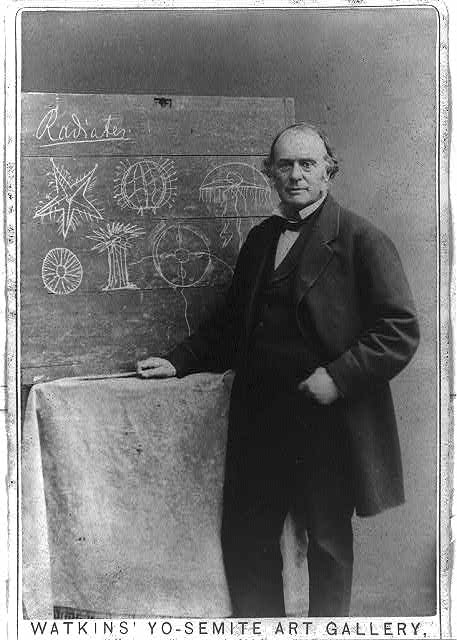
Agassiz had a message for Americans shattered by the Civil War. He announced it in a series of articles published in the Atlantic Monthly during the hard war years. As battles unfolded on the nation’s surface, Agassiz invited his readers below ground. Down they dropped through layers of rock, each stratum studded with the fossilized bodies of creatures from eons ago, like fruits in a Christmas cake. This long story, so long you couldn’t even imagine it, told the story of God’s love for all his creatures since the beginning of life.
To Agassiz, the bodies lying at Gettysburg were just the final chapter in that long story. In 1863, as Lincoln addressed the mothers and fathers of fallen soldiers, Professor Agassiz–whose own son took no part in the Civil War–consecrated this other cemetery. Many millions of years ago, he explained to Atlantic readers, when the tiniest nubs of the dry land that would become America first surfaced from the primordial seas, God placed tiny creatures called trilobites into the sunlit waters. He had even given the trilobites eyes so they could enjoy the golden beams dancing in the infant ocean.
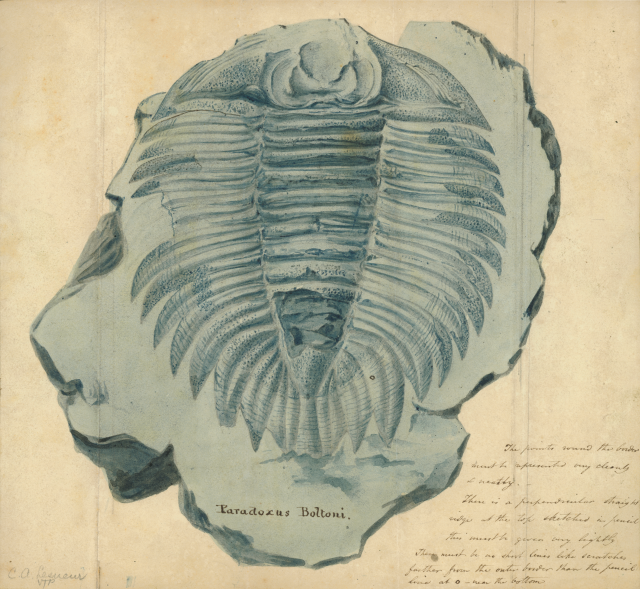
Cue the heartbroken soldiers’ mothers wondering how trilobites might dry their tears. But Agassiz plunged ahead to explain the balm of deep time. God had created these strange three-lobed crustaceans as one of his four “Ideas,” or animal body plans. The trilobites were built on the body plan called Articulata: creatures such as insects and crustaceans that had an exoskeleton of sorts. Humans were Vertebrata, creatures with backbones.
The four Ideas, like Plato’s Forms, stood perfect and unchanging through the millions of years of life on Earth. Over time, for his own reasons, God annihilated the creatures representing one Idea, and then started again with a new creation using the same general Idea, changing a few things here and there according to his own hidden plan. No creature adapted to its environment, a doctrine known as “transformism” that naturalists such as Charles Darwin were proposing. Instead, God had created all creatures where they now lived, repeatedly repopulating the Earth with successive acts of creation.
Agassiz despised Darwin’s Origin of Species. The book had exploded like a bomb in 1859, as the United States lurched toward disunion. “It is poor–very poor!” he told his Harvard colleague Asa Gray (who ratted him out to Darwin). Worse: the book was “atheistical.” Why? Because Darwin’s theory of natural selection suggested that random variations in plants and animals led to long-term changes in species. It was chance, blind chance, not a God reaching into creation repeatedly, that determined whether a creature thrived in a given environment or perished. Darwin wasn’t denying the existence of God. But his theory of natural selection did make God a spear-carrier in the long story of life. This troubled Darwin to his dying day.
Darwin and Agassiz might have clashed over the mechanism revealed in the fossil record: was God creating and extinguishing life repeatedly and cataclysmically, or was natural selection operating randomly and gradually to change life forms? But like a growing number of people in the 1860s, Darwin and Agassiz agreed on deep time’s vast scale as the stage for life on Earth. Whether you were a believer or atheistical, deep time made Earth’s natural history much longer, so long that it became impossible to imagine it. Deep time strained the limits of the human mind. Deep time was–and remains–an inconceivable concept. In its delicious incomprehensibility, deep time caresses divinity.
You might think that the dizzying millennia of deep time shrank the significance of the Civil War dead. After all, the fallen soldiers lay on the topmost surface of the Earth. Even at 750,000, the death count was miniscule compared to the billions of creatures that had died in Earth’s long history.
But instead, deep time magnified the significance of the Civil War’s death toll. As the final chapter in a story stretching not from 1776 but from the darkest abyss of time, the Civil War dead joined the long march of life on Earth, from the trilobites to the catastrophes that finally ended with General Lee’s surrender at Appomattox.
The mass death of the Civil War created what Frederick Law Olmsted called a “republic of suffering.” But amid the suffering, deep time offered hope. Death on an even more massive scale, spread over an inconceivably massive time span, revealed the thoughts and endless creative acts of a benevolent God. The dead had not died in vain. Not at Gettysburg in 1863. And not in the billions-year span of time that Louis Agassiz had claimed for the United States. The new world had become very old. And in its antiquity, it had become sanctified as God’s favored nation.
Caroline Winterer is the William Robertson Coe Professor of History and American Studies at Stanford University. Her books include American Enlightenments: Pursuing Happiness in the Age of Reason and (with Kären Wigen) Time in Maps: From the Age of Discovery to Our Digital Era.
